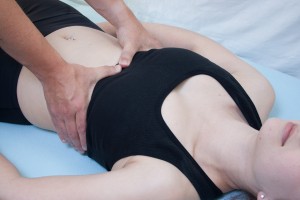Utilizing breathing as a technique when performing manual techniques is greatly under-utilized by a majority of todays therapists. Therapists that utilize concepts from techniques such as CST are familiar with incorporating breath into their treatments; but why not more of us.

“Evidence supports a link between breathing difficulties and back pain. Since trunk muscles perform both postural and breathing functions, disruption in one function can negatively impact the other. Altered breathing mechanics changes respiratory chemistry causing smooth muscle constriction, altered electrolyte balance and decreased tissue oxygenation. These changes can profoundly impact any body system. Increased excitability in the muscular and nervous systems may be most relevant to a manual therapist.” (McLaughlin L, et al., Breathing evaluation and retraining as an adjunct to manual therapy, Manual Therapy (2010), doi:10.1016/j.math.2010.08.006 )
Quite simply, with diminished function of breath, our physiological systems cease to function at their maximum potential. As this process becomes chronic, the physiological environment becomes more acidic, functioning in a more sympathetic, fight, flight state slowing the recuperative processes of our immune system.
There are an abundance of instructional books, videos and classes educating us on the importance of breath and its physiological effects on all our systems.
Simply put, without it, we cease, as it diminishes, so do we.
There are various opinions on how, when and where to breath. As always, Ligamentous Articular Strain Techniques primarily aims to change the environment that the dysfunctional tissues are attempting to function within. There are 2 ways that we change the environment with LAST; holding of inhalation or exhalation by the patient during specific manual techniques.
Come out to the next course to learn how and when to incorporate these techniques into your practice.
For now, here’s a quick video on treating the Respiratory Diaphragm.
http://youtu.be/G0XII-nEa80
Sign up for the FREE Video Series here.